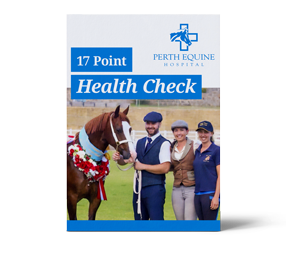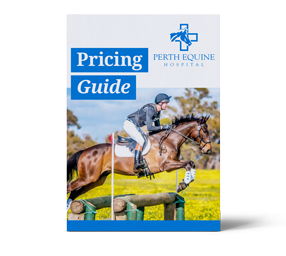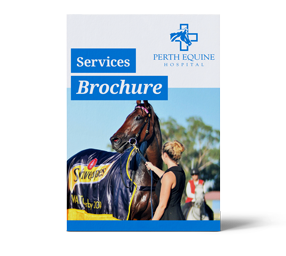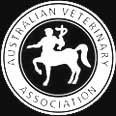Competition horses are incredible athletes, but like any high-performing individual, they can sometimes fall short of their potential. If your horse seems unwilling to perform, lacks power, or has developed uncharacteristic behaviours, they might be experiencing a physical issue. Poor performance is often linked to underlying musculoskeletal pain, but recognising and addressing these issues requires a thoughtful approach.
Signs of Poor Performance
Poor performance can manifest in subtle or obvious ways. Here are some signs horse owners should watch for:
- Reduced willingness to move forward: Your horse may feel ‘lazy’ or less powerful than usual, which could be linked to discomfort or pain.
- Behavioural changes: These might include reluctance to be saddled, swishing the tail, pinning the ears, or even bucking under saddle.
- Gait abnormalities: Shortened strides, stiffness, or a choppy gait, particularly during transitions or on turns, may suggest musculoskeletal problems.
- Loss of responsiveness: Your horse may resist bending, lean on the reins, or struggle with balance during lateral work.
- Changes in jumping performance: Struggling with distances between fences, refusing jumps, or landing consistently on one lead could be pain-related.
Even minor changes in behavior or performance can signal a deeper issue. Recognising these early signs is crucial for identifying and addressing the problem.
Common Causes of Poor Performance
Poor performance often stems from physical pain, particularly musculoskeletal issues. Some common culprits include:
- Lameness: Even low-grade lameness, which might not be visible during simple movement, can cause discomfort and limit performance.
- Back or neck pain: Stiffness or discomfort in the thoracolumbar or cervical regions can affect the horse’s ability to move freely.
- Hindlimb weakness: Issues in the pelvis or sacroiliac joint can lead to a lack of propulsion or difficulty with collected work.
- Foot problems: Uneven shoe wear, poor hoof balance, or subtle pain in the forelimbs can reduce stride quality and comfort.
- Tack fit: An ill-fitting saddle or bit can lead to physical pain and behavioural resistance.
These issues often overlap, requiring careful evaluation by a veterinarian.
Diagnosing Poor Performance
Identifying the cause of poor performance involves a combination of observation, clinical assessment, and advanced diagnostics. Here’s how veterinarians approach the process:
- Accurate History: Owners and riders play a crucial role in providing details about the horse’s recent performance, changes in behaviour, and any past injuries.
- Physical Exam: This includes examining the horse’s conformation, back, limbs, and hooves. A skilled vet will also assess muscle tone and symmetry for signs of underlying problems.
- In-hand and Lunge Assessment: Observing the horse’s movement on various surfaces and under different conditions helps reveal subtle lameness or discomfort.
- Ridden Evaluation: Some lameness or discomfort only becomes evident when the horse is ridden. A ridden assessment with the usual tack and rider provides valuable insight.
- Diagnostic Tools: Techniques like nerve blocks, radiographs, ultrasound or advanced imaging (Scyntigraphy, MRI or CT) help localise pain and confirm diagnoses.
The combination of these steps allows veterinarians to uncover the root causes of poor performance, even when issues are subtle or complex.
Treatment Options
Once the underlying cause is identified, treatment can be tailored to the horse’s specific needs. Common approaches include:
- Corrective Shoeing and Trimming: Ensuring proper hoof balance and support can alleviate many performance issues.
- Medications: Anti-inflammatory drugs or joint injections may help manage pain and inflammation.
- Therapeutic Plan Development: Developed for each specific case, therapeutic modalities can include manual therapies, thermal agents, electrophysical modalities, mechanical agents, and therapeutic exercises (ground and underwater exercises).
- Regenerative Medicine: Therapies like platelet-rich plasma (PRP), stem cells, Autologous Protein Solution and Autologous Conditioned Serum may be used for some injuries.
- Tack Adjustment: Ensuring the saddle and bridle fit correctly can prevent further discomfort.
Treatment plans often involve a team approach, including the vet, farrier, physiotherapist, and rider.
Preventing Poor Performance
Prevention is always better than cure. Here are some tips to keep your competition horse performing at their best:
- Regular Veterinary Checkups: Performing a lameness examination before a busy season allows for early detection of issues and can prevent them from escalating.
- Routine Farrier Care: Balanced hooves are essential for proper movement and comfort. Regular foot radiographs provide valuable insights into foot mechanics.
- Maintain Fitness: Ensure your horse is fit for the demands of their discipline. Avoid sudden changes and always gradually increase the workload.
- Vary Work: Incorporating hacking, cross-training, and rest days can reduce repetitive strain.
- Monitor Tack Fit: Regularly check your horse’s saddle and bridle for proper fit as their body changes over time.
A proactive approach to your horse’s health and training can go a long way in preventing issues that lead to poor performance.
When to Seek Help
If you notice signs of poor performance or behavioural changes in your horse, it’s important to act quickly. Early intervention can make a significant difference in resolving the issue and getting your horse back to peak performance.
Final Thoughts
Understanding the physical causes behind poor performance is key to helping your horse feel and perform their best. If you notice any of these signs and would like one of our experts to assess your horse for poor performance, schedule an appointment online Book Now or give us a call at (08) 9479 1800. We’re here to help you every step of the way.
Best Regards,
Dr. Augie
Equine Veterinarian at Perth Equine Hospital
(08) 9479 1800 | au***@*********************om.au
www.perthequinehospital.com.au
References
- Dyson, S. (2016). Evaluation of poor performance in competition horses: A musculoskeletal perspective. Part 1: Clinical assessment. Centre for Equine Studies, Animal Health Trust, Newmarket, Suffolk, UK.
- Dyson, S. (2016). Evaluation of poor performance in competition horses: A musculoskeletal perspective. Part 2: Further investigation. Centre for Equine Studies, Animal Health Trust, Newmarket, Suffolk, UK.
- Dyson, S. (2000). Lameness and Poor Performance in the Sports Horse: Dressage, Show Jumping and Horse Trials (Eventing). American Association of Equine Practitioners (AAEP).
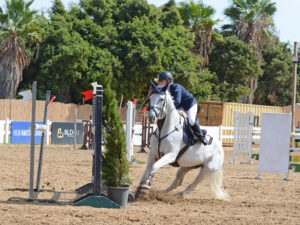
Photo credit: Revital Salomon
